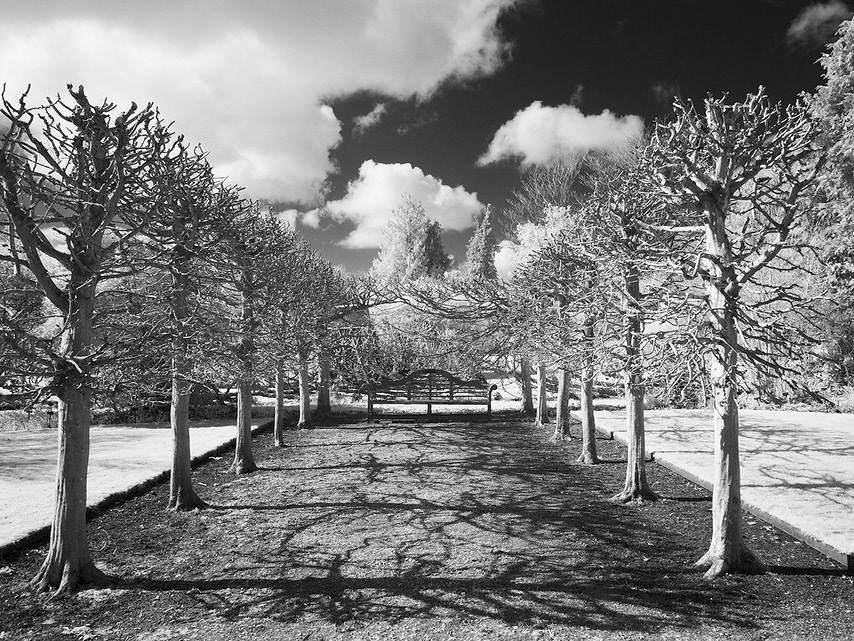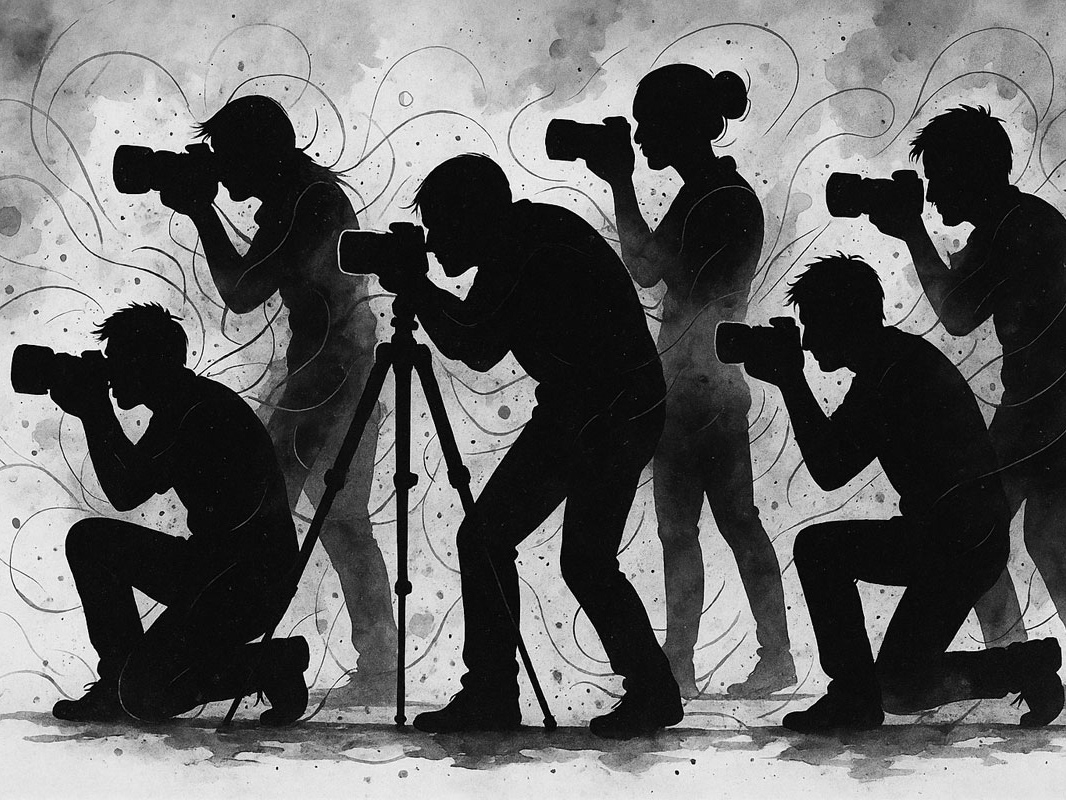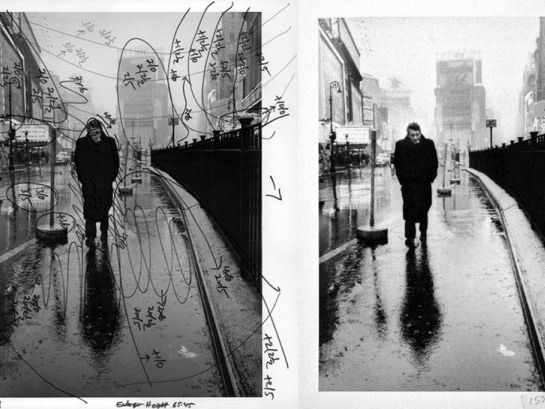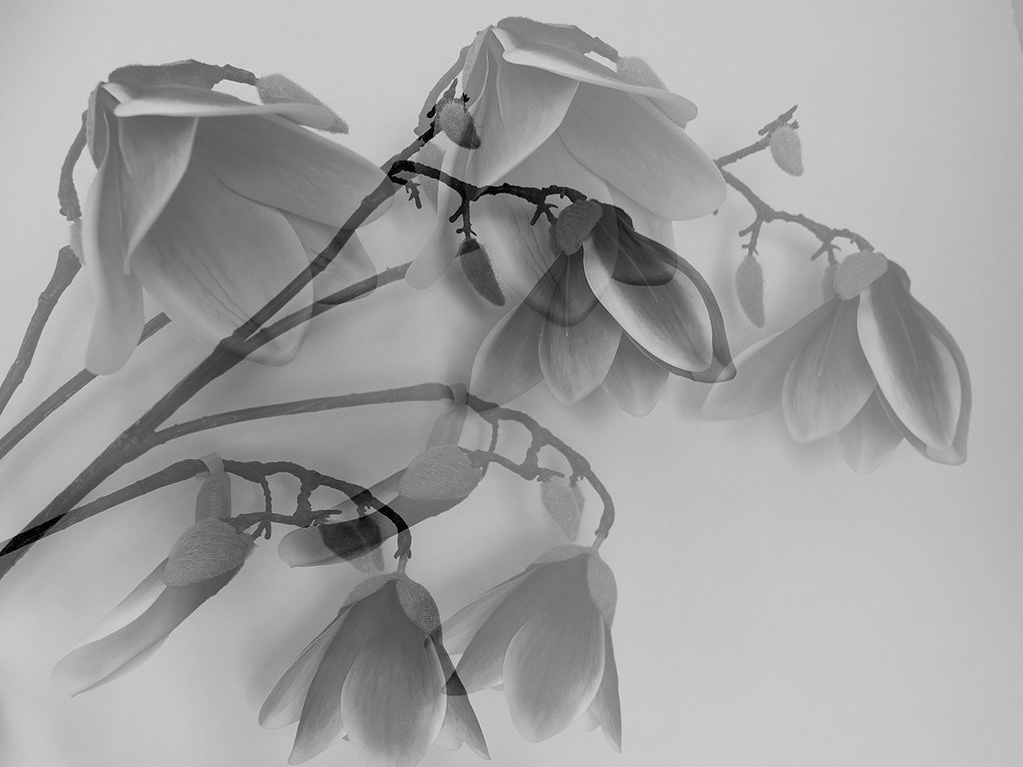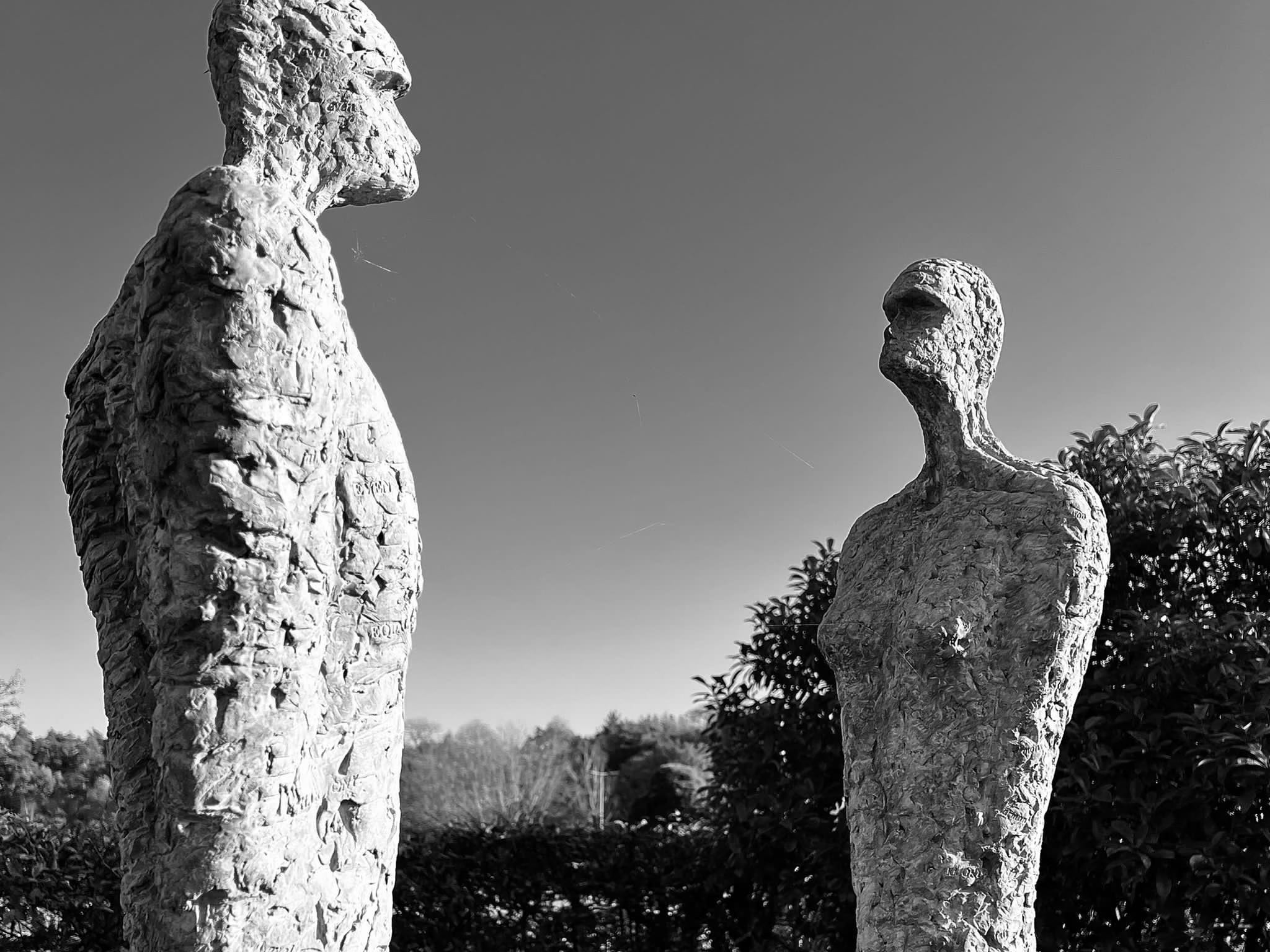Masters of Monochrome:
The Photographers Who Defined Black & White
The Photographers Who Defined Black & White
Monochrome photography has a timeless magic, stripping away the distraction of colour to reveal the essence of light, shadow, texture, and form. Some of the greatest photographers in history have embraced
black-and-white imagery to create work that still resonates today.
black-and-white imagery to create work that still resonates today.
Ansel Adams is perhaps the most celebrated. Known for his breathtaking landscapes of the American West, Adams used the Zone System to control exposure and contrast with extraordinary precision. His images, such as Moonrise, Hernandez, New Mexico, are lessons in tonal mastery.
Henri Cartier-Bresson, the father of the “decisive moment,” used monochrome to capture fleeting human stories. His candid street photography, often shot with a Leica, distilled life into elegant, perfectly composed frames.
Dorothea Lange brought deep humanity to her black-and-white work, particularly during the Great Depression. Her portrait Migrant Mother is an enduring symbol of resilience, made more powerful by the stark tonal contrasts.
Bill Brandt pushed monochrome into bold, abstract territory. His distorted nudes, gritty industrial scenes, and high-contrast landscapes of Britain showed how black-and-white could be both documentary and surreal.
Vivian Maier, whose vast archive was discovered only after her death, brought a poetic eye to street life in mid-century America. Her monochrome images balance intimacy with mystery.
Modern masters like Michael Kenna keep the tradition alive, producing minimalist, long-exposure landscapes that celebrate simplicity and serenity.
The beauty of monochrome lies in its ability to intensify mood and draw attention to composition. Without colour, the viewer engages more deeply with shape, texture, and the dance of light and shadow. Whether in the work of early pioneers or contemporary visionaries, black-and-white photography remains a powerful and enduring form of visual storytelling.
Historic masters
Ansel Adams – “Monolith, the Face of Half Dome” –
This iconic Yosemite image, shot in 1927,
cemented Adams’ reputation with its striking detail, dramatic contrast,
and the artist’s signature tonal precision.
This iconic Yosemite image, shot in 1927,
cemented Adams’ reputation with its striking detail, dramatic contrast,
and the artist’s signature tonal precision.
Henri Cartier‑Bresson – “Behind the Gare Saint‑Lazare” (Place de l’Europe, 1932) –
The quintessential decisive moment, capturing a man suspended mid-jump through a puddle —
a masterclass in timing and composition.
The quintessential decisive moment, capturing a man suspended mid-jump through a puddle —
a masterclass in timing and composition.
Dorothea Lange – “Migrant Mother” (1936) –
Possibly the most powerful photographic symbol of the Great Depression,
Possibly the most powerful photographic symbol of the Great Depression,
this image portrays a destitute mother with her children, radiating both despair and resilience
Robert Capa – “Death of a Loyalist Soldier” (The Falling Soldier, 1936) –
Arguably the single most recognizable war photograph,
capturing the moment a soldier is struck down during the Spanish Civil War.
Arguably the single most recognizable war photograph,
capturing the moment a soldier is struck down during the Spanish Civil War.
Sebastião Salgado – Portraits from Workers and Genesis series
His monumental monochrome work blends stark beauty with social consciousness,
often focused on humanity and the environment.
His monumental monochrome work blends stark beauty with social consciousness,
often focused on humanity and the environment.
Imogen Cunningham – “Magnolia Blossom” (1920s)
A botanical close-up rendered with such clarity and grace that it remains one of her most celebrated images.
A botanical close-up rendered with such clarity and grace that it remains one of her most celebrated images.

Henri Cartier Bresson
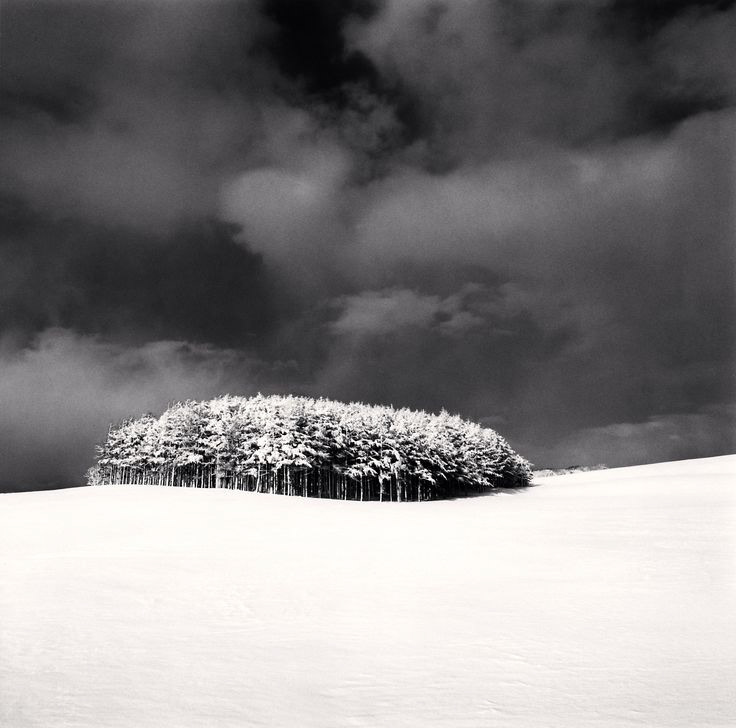
Michael Kenna
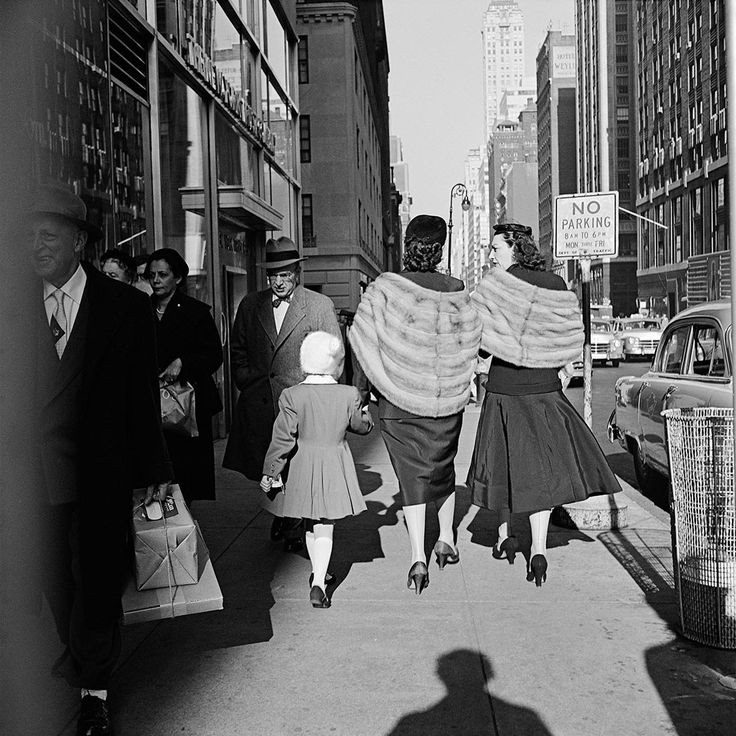
Vivian Maier

Sebastiao Salgado Magnum Opus
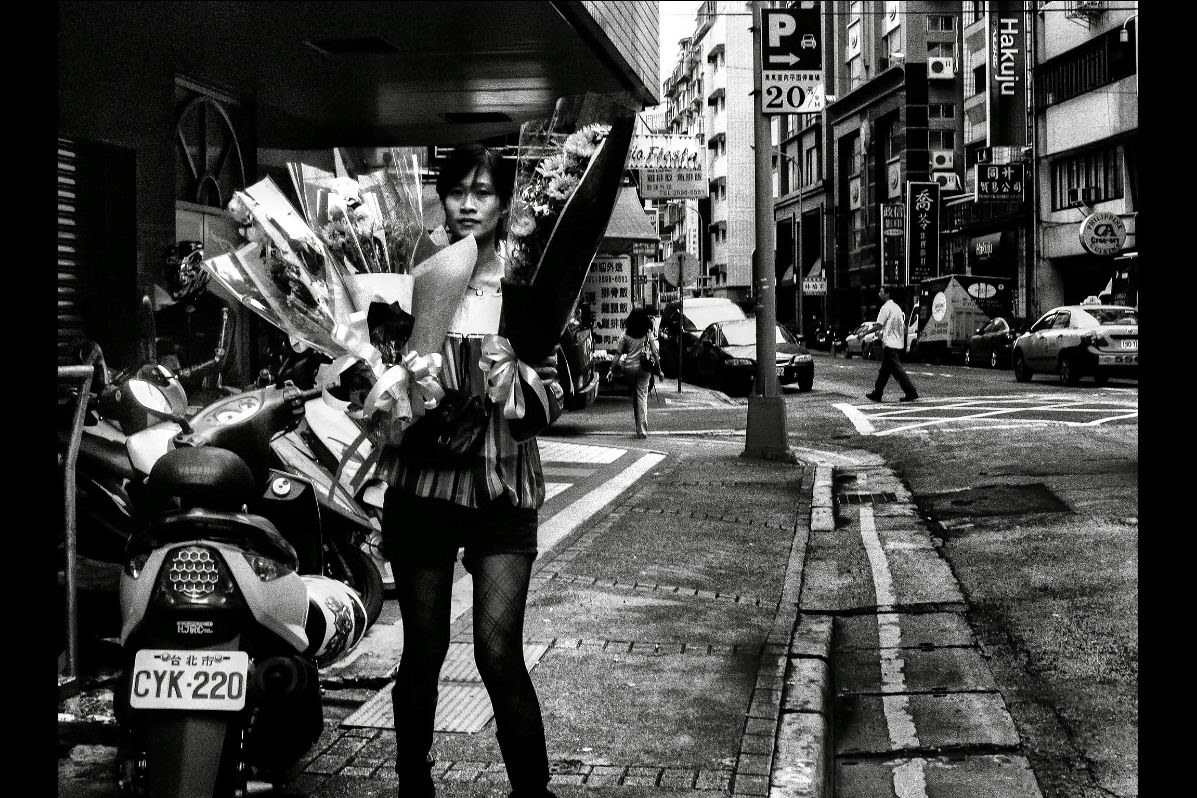
Daido Moriyama
Michael Kenna – “Ratcliffe Power Station”
Minimalist industrial landscape showing Kenna’s signature long exposure and ethereal tones.
Minimalist industrial landscape showing Kenna’s signature long exposure and ethereal tones.
Hiroshi Sugimoto – “Caribbean Sea, Jamaica” (Seascapes)
A tranquil, minimalist horizon exploring the intersection of time, light, and perception..
A tranquil, minimalist horizon exploring the intersection of time, light, and perception..
Vivian Maier – “Self-Portrait in Reflection”
A mirror self-portrait, blending mystery and the everyday in her characteristic style.
A mirror self-portrait, blending mystery and the everyday in her characteristic style.
Lee Miller – “In Hitler’s Bathtub” (1945)
Taken in Hitler’s Munich apartment on April 30, 1945, by David E. Scherman – a surreal, defiant historical statement.
Taken in Hitler’s Munich apartment on April 30, 1945, by David E. Scherman – a surreal, defiant historical statement.
More about Lee Miller:
Lee Miller (1907–1977) was far more than a fashion model,
she became a pioneering photographer, surrealist
and one of the few accredited female WWII war correspondents.
she became a pioneering photographer, surrealist
and one of the few accredited female WWII war correspondents.
After modelilng for Man Ray and collaborating on surrealist techniques
like solarization she shifted into photojournalism, capturing haunting scenes of the Blitz, liberated Paris, and concentration camps for Vogue and Life.
like solarization she shifted into photojournalism, capturing haunting scenes of the Blitz, liberated Paris, and concentration camps for Vogue and Life.
Her most famous image, captured by photographer David E. Scherman, shows Miller bathing in Hitler’s bathtub in Munich on the very day the dictator died—April 30, 1945.
Her dirty boots, caked with Dachau mud, rest on the bathmat
and a portrait of Hitler hovers in the background, making the scene surreal and charged with symbolism.
Her dirty boots, caked with Dachau mud, rest on the bathmat
and a portrait of Hitler hovers in the background, making the scene surreal and charged with symbolism.
This photograph is deeply layered: a poignant act of reclaiming space, a surreal statement of power inversion, and a testament to Miller’s bold commitment to confronting historical atrocity through art. She arranged the scene carefully with Scherman—a blend of documentary urgency and surrealist staging .
After the war, she retreated from the public eye, living quietly at Farleys House & Gallery in East Sussex,
where her son Antony Penrose later helped preserve her legacy
where her son Antony Penrose later helped preserve her legacy

